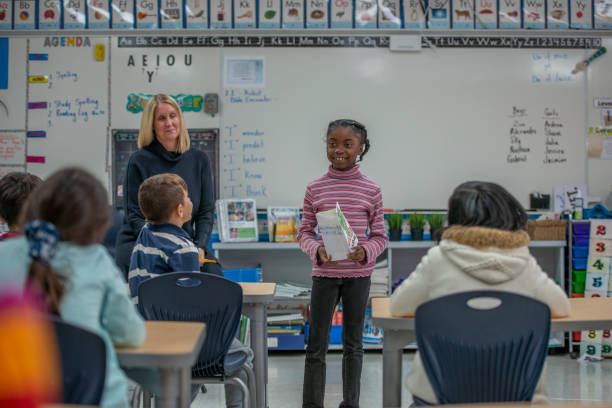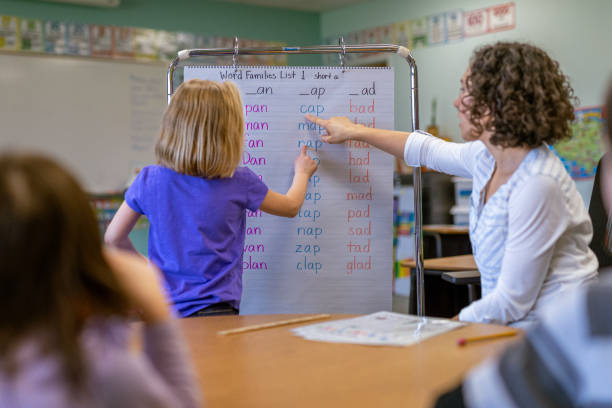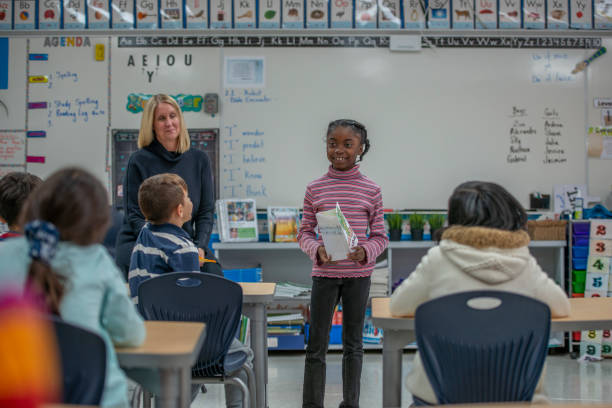Literacy instruction is an educational topic that’s practically overflowing with research and resources. But that abundance of options can be difficult to sift through, especially for new teachers still getting the hang of their profession.
It doesn’t help that more recent insights about literacy instruction tend to overemphasize the importance of phonics. Though phonics is an integral part of a comprehensive literacy program, it’s not the only part. Too much time spent on phonics can cause teachers to lose sight of an overarching goal: helping young students become proficient writers and fluent readers who communicate with clarity, evaluate ideas, and construct meaning from texts.
Phonics practices like rote memorization of syllable types overlook much more valuable research about how automatic reading develops. Decoding alone is not enough. It is the integration of sound-based (phonological), visual (orthographic), and meaning-based (semantic) information in the brain that builds and supports reading fluency. Research also suggests that explicit vocabulary instruction supports comprehension development, and vice versa; there is a reciprocal relationship between the two.

The good news is, there’s a way for teachers to integrate the aforementioned word components (meaning orthographic, phonological, and semantics) while still including phonics as a worthwhile portion of a literacy program. The key? Using sentence stems that contain targeted vocabulary words. Sentence stems offer a beneficial scaffold for students—especially those who struggle with written expression—and can be easily adapted to fit teacher needs, making them an invaluable tool.
Sentence stems offer an opportunity to bridge the big five of literacy: vocabulary, fluency, comprehension, phonemic awareness, and phonetics. As students write using sentence stems, they are actively encoding words and applying their phonemic awareness skills, while transferring their understanding of phonics concepts. Vocabulary and comprehension skills are strengthened, and fluency is practiced as students reread their sentences out loud. This holistic approach pays dividends for teachers and students alike.
Start with Phonics and Phonemic Awareness
Before incorporating sentence stems into instruction, teachers should present a phonics concept, related vocabulary words, and chances to practice phonemic awareness.

For example, a teacher might discuss how the long “a” sound is sometimes spelled by vowel teams “ai” and “ay.” From there, the teacher could facilitate inquiry into where students believe each vowel team shows up most often in words (in this case, “ai” in the beginning or middle of syllables and “ay” at the end) and offer opportunities for students to manipulate the sounds in related words. The teacher would then provide Tier 2 vocabulary words (words that span many academic areas) where both “ai” and “ay” are present. From these instructions, students would be able to bridge from phonics and phonemic awareness to vocabulary and comprehension.
Bridge to Vocabulary and Comprehension
In the above example, words like dainty, prevail, and delay might be used. The teacher could continue their lesson by drawing attention to the word meanings, synonyms and antonyms, pronunciation, phonemes, syllables, and morphemes (when appropriate). Examples and nonexamples of the targeted words, as well as shades of meaning and visually similar words, might also be explored.
Time for Sentence Stems
After the teacher helped their students understand a word like dainty, they could transition to independent practice. The teacher might give students a partial sentence, such as, “The flower was dainty, so it…” The students’ comprehension of the word dainty is a prerequisite to successfully writing a complete sentence with dainty included therein.

Artificial intelligence (AI) tools are a great teacher resource for creating sentence stems that are dependent on the students’ knowing the meaning of the featured vocabulary word. A possible AI prompt could be something like, “Write sentence stems for the following vocabulary words: dainty, prevail, delay. Write the sentence stems so that the student must know the meaning of the vocabulary word to complete the sentence.”
Here are two such sentence stem examples: “Even though the game was difficult, our team believed we could prevail because…” and “We had to delay our picnic because…”
Additional instruction on the conjunctions because, but, and so—and varying sentences that can include each—would take this lesson one step further in supporting students’ knowledge of sentence construction and meaning.
Fluency Check
Students need ample opportunities to read their written works—including those created with the help of sentence stems—out loud to a teacher or a peer. Rereading written work out loud promotes self-editing and increases reading fluency. After students write their sentences using proper writing conventions, then reread to themselves to make sure their sentences make sense, they can share their sentences with a partner.

Bridge the Big Five and Build Confidence
Rereading sentences with a partner builds confidence and strengthens relationships with peers. This final step offers another opportunity to encounter the target word in context, which integrates phonological, visual, and semantic information; reinforces the mapping of the word in the brain; and lays the final stone to bridge the big five of literacy.
Cre: Jamie Nanfara
Source: https://www.edutopia.org/article/sentence-stems-tips-classroom



